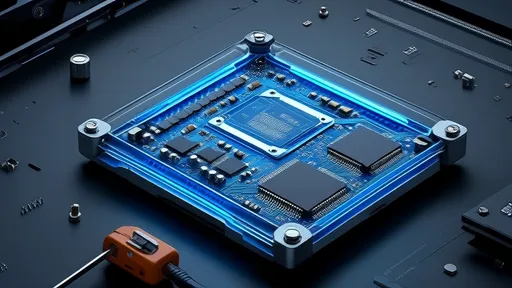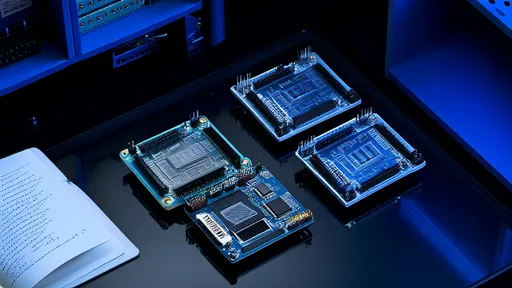The realm of embedded systems has expanded exponentially over the past decade, permeating industries ranging from automotive to healthcare. With this proliferation, the security of firmware—the foundational software that operates these devices—has come under intense scrutiny. As cyber threats grow more sophisticated, ensuring the integrity and resilience of embedded system firmware has become a critical priority for developers and security professionals alike.
Understanding the Stakes
Embedded systems often operate behind the scenes, controlling everything from industrial machinery to smart home devices. Unlike traditional computing environments, these systems are designed for specific tasks, with firmware that is tightly integrated into the hardware. This integration, while efficient, creates unique security challenges. Firmware vulnerabilities can be exploited to gain unauthorized access, disrupt operations, or even cause physical damage. The consequences of such breaches can be severe, particularly in sectors like healthcare or critical infrastructure.
One of the primary difficulties in securing embedded firmware lies in its diversity. Each device may run custom or proprietary firmware, making standardized security measures difficult to implement. Additionally, many embedded systems lack the computational resources to support robust security protocols, leaving them vulnerable to attacks. As a result, firmware security detection must be both thorough and adaptable, capable of identifying vulnerabilities across a wide range of systems.
The Evolution of Firmware Security Threats
Historically, firmware attacks were relatively rare, as exploiting them required specialized knowledge and access. However, the landscape has shifted dramatically. Attackers now recognize firmware as a high-value target due to its low-level control over hardware. Advanced persistent threats (APTs) and state-sponsored actors have been known to target firmware to establish long-term persistence within a system, evading traditional detection methods.
Recent high-profile incidents have underscored the urgency of firmware security. For example, vulnerabilities in baseband processors or bootloaders can allow attackers to execute malicious code before the operating system even loads. Such attacks are particularly insidious because they often bypass conventional security mechanisms like antivirus software or firewalls. As firmware becomes increasingly interconnected with other system components, the potential attack surface continues to grow.
Current Approaches to Firmware Security Detection
To combat these threats, researchers and developers have devised several methodologies for firmware security detection. Static analysis, for instance, involves examining firmware binaries without executing them, searching for known vulnerabilities or suspicious code patterns. This approach is useful for identifying hardcoded credentials, buffer overflow risks, or other common flaws. However, static analysis can be limited by obfuscation techniques or proprietary firmware formats.
Dynamic analysis, on the other hand, involves running the firmware in a controlled environment to observe its behavior. This method can uncover runtime vulnerabilities, such as memory corruption or privilege escalation issues. Emulation tools and sandboxing techniques are often employed to facilitate dynamic analysis without risking actual hardware. While effective, dynamic analysis can be resource-intensive and may not capture all possible execution paths.
Hybrid approaches, combining elements of both static and dynamic analysis, are gaining traction as a more comprehensive solution. By leveraging machine learning and anomaly detection, these methods can identify subtle irregularities that might indicate compromise. Additionally, firmware attestation—a process of verifying the integrity of firmware before execution—has emerged as a promising technique for preventing unauthorized modifications.
The Role of Industry Standards and Best Practices
As firmware security becomes a pressing concern, industry standards and best practices are evolving to address it. Organizations like NIST and ISO have published guidelines for secure firmware development and testing. These frameworks emphasize secure coding practices, regular vulnerability assessments, and the implementation of hardware-based security features like Trusted Platform Modules (TPMs).
Manufacturers are also beginning to adopt secure-by-design principles, integrating security considerations into the firmware development lifecycle from the outset. This shift represents a significant departure from the traditional approach, where security was often an afterthought. By prioritizing security early in the design process, developers can reduce the likelihood of introducing vulnerabilities that could be exploited later.
Challenges and Future Directions
Despite these advancements, significant challenges remain in firmware security detection. The sheer volume of legacy devices with outdated or unsupported firmware poses a persistent risk. Many of these systems were not designed with security in mind and may lack the capability to receive updates or patches. Addressing this issue requires innovative solutions, such as network-level protections or firmware hardening techniques.
Looking ahead, the field of firmware security detection is likely to see increased automation and intelligence. Artificial intelligence and machine learning could play a pivotal role in identifying novel attack vectors or predicting vulnerabilities before they are exploited. Furthermore, collaboration between industry stakeholders, academia, and government agencies will be essential to stay ahead of emerging threats.
Ultimately, securing embedded system firmware is not a one-time effort but an ongoing process. As attackers continue to refine their tactics, the tools and techniques used to detect and mitigate firmware vulnerabilities must evolve in tandem. By fostering a culture of security awareness and investing in robust detection mechanisms, the industry can safeguard the critical systems that underpin modern life.

By /Jul 11, 2025

By /Jul 11, 2025

By /Jul 11, 2025

By /Jul 11, 2025

By /Jul 11, 2025

By /Jul 11, 2025

By /Jul 11, 2025

By /Jul 11, 2025

By /Jul 11, 2025

By /Jul 11, 2025

By /Jul 11, 2025

By /Jul 11, 2025

By /Jul 11, 2025

By /Jul 11, 2025

By /Jul 11, 2025

By /Jul 11, 2025

By /Jul 11, 2025

By /Jul 11, 2025